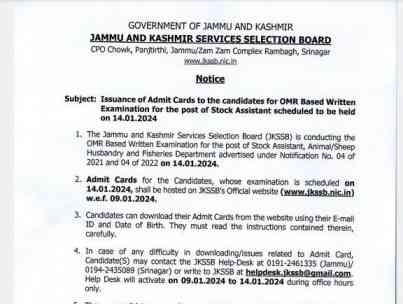Jammu and Kashmir geography notes for jkssb various exams and other Jammu and Kashmir geography notes.
PHYSIOGRAPHY (GEOGRAPHY OF JAMMU AND KASHMIR)
Jammu and Kashmir is home to several valleys such as the Kashmir valley, Tawi valley, Chenab Poonch valley, Sind valley and Lidder valley. The main Kashmir valley is 100 km wide and 15520.3 km² in area. The Himalayas divide the Kashmir valley from Ladakh while the Pir Panjal range, encloses the valley from the west and the South, separates it from the Great plains of Northern India.
Along the North-Eastern flank of the valley runs the main range of the Himalayas. This densely settled and beautiful valley has an average height of 1850 m above sea-level, but the surrounding Pir Panjal range has an average elevation of 5000 m. The territory of the state is divided into seven physiographic zones closely associated with the structural components of the Western Himalayas. These include
1. Plains The plains of the Jammu region are characterised by interlocking sandy alluvial fans that have been deposited during the Pleistocene Age by the streams flowing from the foothills and by a much dissected pediment (eroded bedrock surface) covered by loams and loess (fine deposits of silt).
2. Foothills Rising from 2002 to 7002 ft, the foothills form the outer and inner zones.
3. Lesser Himalayas Composed of PermoCarboniferous volcanic rocks of granite, gneisses, quartz and slates, the Pir Panjal constitutes the first mountain rampart comprising the Western most part of the Lesser Himalayas.
4. Greater Himalayas This contains ranges reaching more than 20013 ft (6100 mi.. altitude. Those ranges act as a climatic divide and stop the cold wind coming from Central Asia.
5. Valley of Kashmir Between the Pir Panjal and the Western end of the Great Himalayan ranges lies a deep asymmetrical basin called the Valley of Kashmir.
6. Upper Indus Valley The valley of the Upper Indus river follows the geological strike (structural trend) Westwards from the Tibetan border to the point in the Pakistani sector where, it rounds the great mountainous mass of Nanga Parbat to run Southwards in deep gorges cut across the strike. In its upper reaches, gravel terraces flank the river, each tributary builds an alluvial fan in the main valley. The town of Leh stands on such a fan, 11483 ft (3500 m) above the sea level.
7. The Karakoram Range The great granitegneiss massifs of the Karakoram range-which straddles the Indian and Pakistani sectors of Kashmir-contain some of the world's highest peaks. These include K2 on the border of the Pakistani sector and one of the Chinese-administered enclaves; with an elevation of 28251 ft (8611 m) at least 30 other peaks exceed 24000 ft (7300 m). The range, which is still heavily glaciated, rises starkly from dry, desolate plateaus that are characterised by extremes of temperature and shattered rock debris. The Karakoram, along with other areas in and around the Himalayan region, is often called the roof the world.
Climate of J&K
Climate exerts a profound infhoences on the inhabitants of any region. Their social cultural economic and other aspects of life are directly or andirecthy governed by climate The climate of the state range from the burning and the soch heat of the plans of (amma Division to the supped heights of Golmace (Kashmit) and the peak of Mount Gon Austin (Ladakh) 2824 ve sea level, the second highest in the world. All these represent the three different climatic zones. From alpine (Ladakh region) to the sub-tropical (Jammu region), the extreme variants of climate in Jammu and Kashmir are due to its location and topography The sheltered Valley of Kashmit, Aowever, exhibits an exception to its peripheral region. Broadly, the State of Jammu and Kashmir comprises three distinct climatic regions: cold arid desert areas of Ladakh, temperate Kashmir valley, and the humid sub-tropical region of Jammu. The temperature in the region varies spatially Leh is the coldest (-28°C average) while Jammu is the hottest. Mean monthly temperature is lowest in January and highest in July, except in Jammu, where highest temperature is experienced in June. Mean monthly temperature in January varies from -17°C at Drass to 14°C at Jammu; Kargil and Leh being other stations of below freezing average. Considering the overall distribution of climatic elements, four units become obvious.
1. The windward (Jammu region)
2. The leeward (Ladakh region)
3. The high altitude Kashmir (Himadri. Pir Pan
4. The Kashmir valley
The climate of the Valley of Kashmir has its own peculiarities. The seasons are marked with sadder change and the climate can be divided into six seasons of two months each. The above mentioned climate divide, does not apply only to Kashmir valley, bu also to the parts of Jammu which, like Kashmir valle are subjected to snowfall and a severe winter. May parts of the Ladakh region are also subjected to hear snowfall and others to severe dry cold. There is suct heavy snowfall on the way to Ladakh from the valley that it remains cut off by road for about 5-6 months every year.
Mountains and their Passes
Kashmir valley is enclosed by high mountain-chains on all sides, except for certain passes and a narrow gorge a Barammalla. There are Shiwalik hills towards the South and very lofty mountains in the North, the peaks which are always remain covered with snow. There are volcanic mountains too in the state. Some of the famous mountains and their passes are
Karakoram and Kyunlun :- Both these mountain ranges lie to the North and North-East of the state and separate à from Russian. Turkistan and Tibet. In the North-West, Hindukush range continues towards Karakoram ranges, where K2 peak, the second highest peak of the world, is situated. Two lofty peaks of Gasherbrum (8570 m) and Masherbrum (7827 m) also lies there. People of Ladakh pass through Karakoram pass (5352 m) and Nubra pass (5800 m) while going to Chinese Turkistan and Khattan. One can reach Tibet from Ladakh via Kharudang La pass (3557 m) and Chang La pass (5600 m).
Zanskar. It is about 600 m above sea level and separates Indus valley from the Valley of Kashmir. It prevents South-West, coastal winds from reaching Kashmir. Ladakh region terminates at Zoji La pass (3529 m), front where begins the Valley of Kashmir. Poat pass (5716 m) is also a famous pass in this range.
Nanga Parbat :-This range sea level and is utterly devoid of vegetations conquered by the Italian mountaineers in 1954. This is now under the unlawful possession of Pakistan Ladakh and Kashmir border.It is 7055.1 spreads in Gilgit. Its height is 8107.68 m above.
It lies between . m above sea level. To its South-East is situated to its North-West is situated Kargil tehsil of Ladakh. One has to pass through Bawalocha pass (4801 m) Ladakh) from Kullu.
Burzil :- It bifurcates Kashmir and Ladakh on which Burzil pass is situated at a height of 3200 m above sea level.
Amarnath :- Amarnath mountain is famous for its holy Amarnath cave, at a height of 5372 m above sea level. They have to pass Mahagunas pass (1475 m) on their way to Shri Amarnathji. Gwasharan (5450 m) is situated in the Lidar valley towards Pahalgam; on it lies the famous glacier Kolahi. Sheshnag mountain also spreads in this valley. It is called Sheshnag as its peaks resemble the heads of seven big snakes.
Toshmaidan :- Toshmaidan (4270 m) and Kajinag (3700 m) mountains lie in the inner Himalayas. They remain clad with snow throughout the year, but during summer when the snow melts, the water flows down into the Jhelum river.
Afrawat:- This mountain spreads through the Gulmarg valley. The famous spring Alpathar lies on its peak, from which, Nullah Nagal comes out and flows down into the Wular lake.
Pir Panjal :- This range separates Kashmir valley from the outer Himalayas and it is about 2621 km in length and 50 km in breadth. Famous Banihal pass (2832 m) lies in the shape of a tunnel on its peak, it remains covered with snow during winter making it impassable. Now at a height of 2200 m above sea level a new tunnel, namely Jawahar Tunnel has been constructed. The tunnel is 2825 m long and it was opened for traffic on 22nd December, 1956. On the other end of this range lie Baramulla pass (1582 m) and Hajipir pass (2750 m). Hajipir joins Poonch and Uri. During 1965 Indo-Pak War, the Indian Army had occupied this pass. Later on, it was handed over to Pakistan.
Shiwalik :- These hills extend from the North of the outer plains to middle mountains of the state reaching heights varying from 600m to 1500 m above sea level.
Volcanic Peaks One volcanic peak Soyamji (1860 m) is situated in North Machhipura (Handwara) and the other Kharewa peak lies in tehsil Pahalgam, which is now dead or extinct, the former, however, continued eruption of Lava for about thirteen months during 1934, is now in dormant state. There is a temple on this peak and many sulphur springs are found at the foot of the hill. These volcanic mountains are the cause of earthquakes in Kashmir. So far, twelve devastating earthquakes have occurred in Kashmir. Of these, the earthquake of 1885 was the most devastating. Hundreds of houses collapsed, thousands of people died and there were cracks in the Earth as a result of this earthquake.



.jpg)
.jpg)



